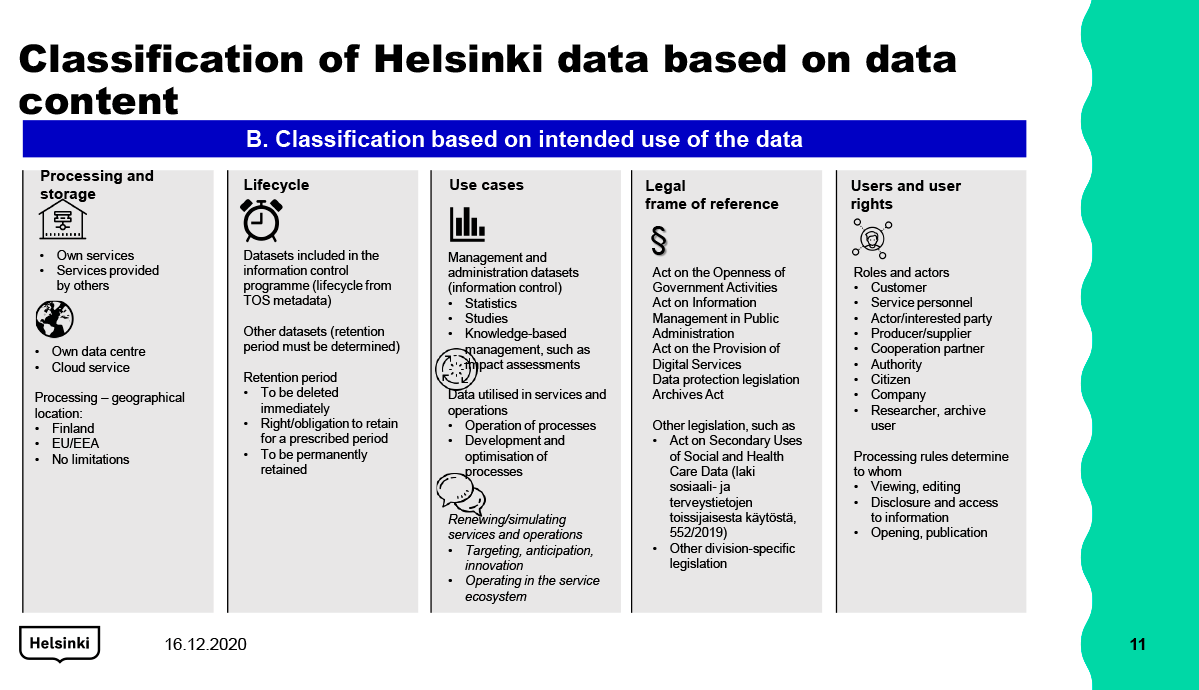4.2. Usage-based classification
Figure 6. Usage-based data classification
|
Processing and storage |
Describes the location of the data: whether the data processing platform is self-produced or procured as a service, where the data is saved. Location information is relevant to data use as the places where data may be stored may be depend on legislation or the City’s own policies. |
|
Lifecycle of the data |
The lifecycle management of the datasets included in the data management plan is based on the metadata documented in the data management plan. A retention period must also be defined for other data: whether the data is deleted immediately after the service is rendered, whether there is an associated right or obligation to store the data for a fixed period or whether the data is stored permanently. |
|
Use cases |
Use cases are closely linked to the purposes for which data can be collected and used. Use cases are an integral part of all data processing policies. Use cases are described in greater detail at the start of this document. |
|
Legal framework |
The various obligations and restrictions imposed by legislation must be taken into account in the utilisation of data at City level. In addition to the Act on the Openness of Government Activities, other pieces of legislation that need to be taken into account include the Data Protection Act, the Act on Information Management in Public Administration, the Act on the Provision of Digital Services, the Archives Act, the PSI Directive, the Act on the Secondary Use of Health and Social Data and other sector-specific legislation. |
|
Users and access rights |
The use of data is ultimately governed via access rights. The identification of user groups helps define which user groups have access to different types of data. |
